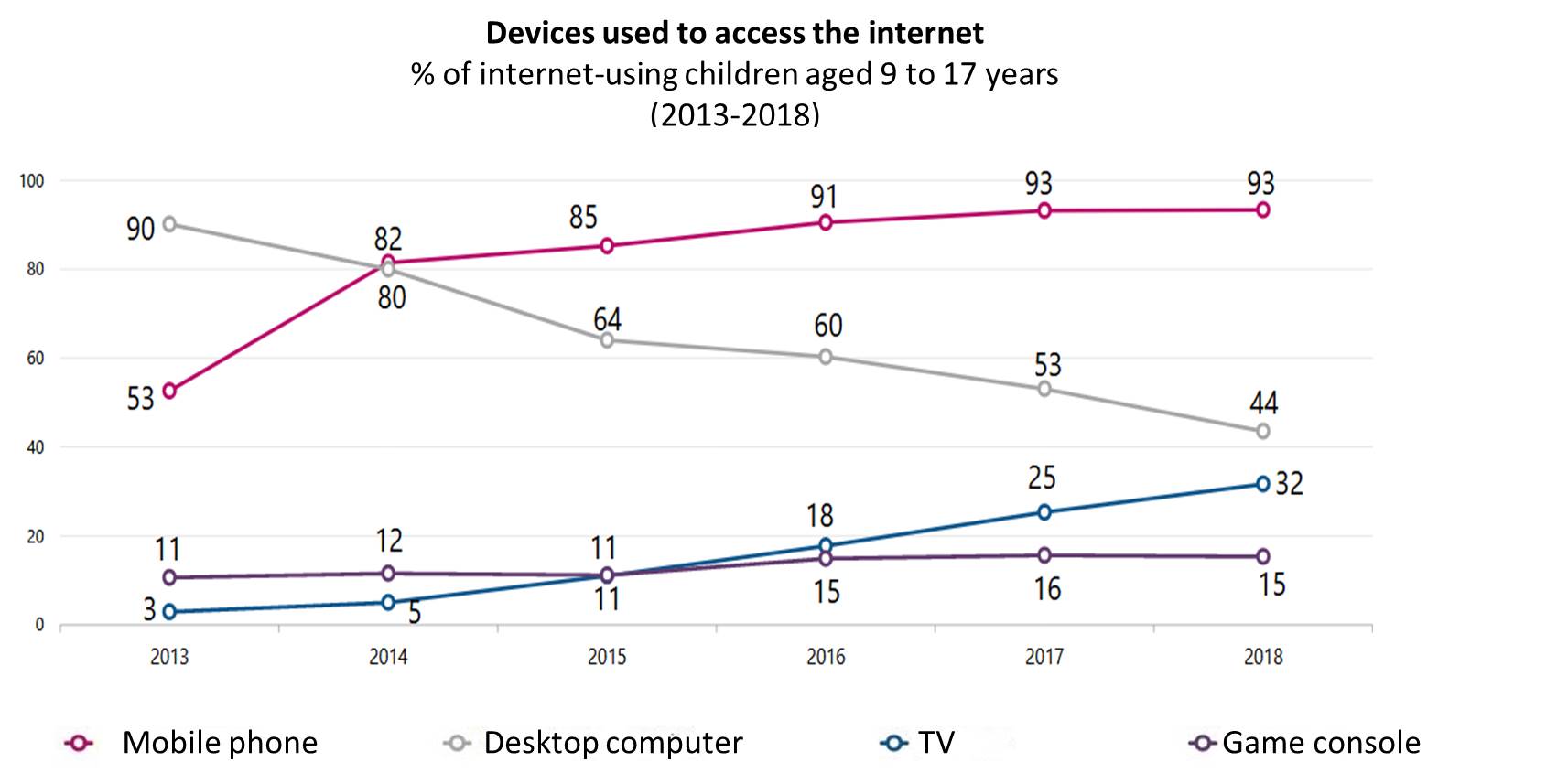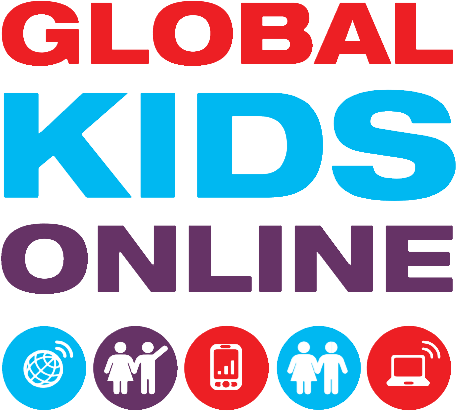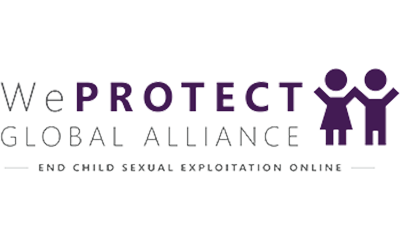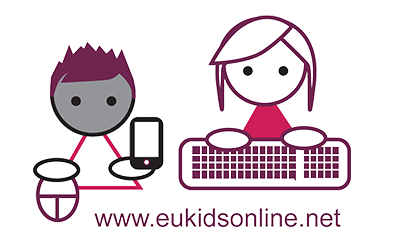In 2018-19, the survey estimated that 86% of Brazilian children aged 9 to 17 years are internet users – up from 85% in the previous year. While inequalities in access to and use of digital technologies persist, some of the gaps are slowly decreasing. Children from higher socio-economic backgrounds still have better access to the internet (AB, 98% over the previous two years) but children from pooper backgrounds (DE) are slowly catching up – 73% had access in 2018-19 compared to 70% the year before that.
 Mobile phones are still the main devices used – 93% of children use a mobile phone to go online, representing 22.7 million individuals aged 9 to 17 years old. The proportion of children who access the internet exclusively via mobile phone also grew – for 53% of children in 2018-19 their mobile phone was the only device used to go online, compared to 44% the previous year. At the same time, the use of desktop computers has been gradually decreasing from 90% in 2013-14 to 44% in 2018-19. There is also an increase in internet access through TV sets in 2018-19 (32%), following an upward trend observed since 2013-14, when only 3% of connected children used these devices to go online.
Mobile phones are still the main devices used – 93% of children use a mobile phone to go online, representing 22.7 million individuals aged 9 to 17 years old. The proportion of children who access the internet exclusively via mobile phone also grew – for 53% of children in 2018-19 their mobile phone was the only device used to go online, compared to 44% the previous year. At the same time, the use of desktop computers has been gradually decreasing from 90% in 2013-14 to 44% in 2018-19. There is also an increase in internet access through TV sets in 2018-19 (32%), following an upward trend observed since 2013-14, when only 3% of connected children used these devices to go online.
The ICT Kids Online Brazil survey also shows an increase in multimedia activities carried out by children – 83% report watching online videos, shows, films or TV series. For the first time in the survey’s historical series, these activities are most prevalent, surpassing looking up information on the internet for schoolwork (74%) and instant messaging (77%). Other popular online activities include listening to music (82%) and playing online games (60% play alone and 55% with other players).
 The ICT Kids Online Brazil 2018-19 survey also presents the results of two rotating modules that were included in 2016-17 and administered again in this edition – the first includes questions about the digital ecology (use of social networks, privacy, sharing of content) and the second covers exposure to and consumption of online advertising. In 2018-19 about 20 million children aged 11 to 17 had profiles on social networks (82%). WhatsApp is the most common platform on which children have profiles (72%) surpassing Facebook (66%) for the first time. Instagram presents the greatest increase as the proportion of children who have a profile jumped from 36% in 2016-17 to 45% in 2018-19.
The ICT Kids Online Brazil 2018-19 survey also presents the results of two rotating modules that were included in 2016-17 and administered again in this edition – the first includes questions about the digital ecology (use of social networks, privacy, sharing of content) and the second covers exposure to and consumption of online advertising. In 2018-19 about 20 million children aged 11 to 17 had profiles on social networks (82%). WhatsApp is the most common platform on which children have profiles (72%) surpassing Facebook (66%) for the first time. Instagram presents the greatest increase as the proportion of children who have a profile jumped from 36% in 2016-17 to 45% in 2018-19.
The internet is the platform where children see advertisements most often. Nearly two-thirds of children are exposed to online advertising (74%) with the main types of content being people teaching them how to use products (55%), unboxing (49%), and showcasing products (48%). In comparison, 64% of children have seen advertisements on TV and a similar number have seen ads on video sites (67%). Overall, the proportion of children (11 to 17 years old) who report having seen advertisements decreased across almost all of the analysed platforms in comparison with 2016-17 – for example TV adverts are seen by 16% less compared to 2016-17, 80%). It is important to consider, however, that some of the new forms of publicising products and services may not be clearly identified as part of dissemination strategies, especially by children.
The Brazilian findings were recently presented at the Internet Governance Forum in Berlin as part of the Latin American Kids Online evidence group (presentation). The session reported on the global evidence on children’s internet use and what can be done to keep them safe online. It also included findings from EU Kids Online (presentation) and Global Kids Online (presentation).

Post author: Alexandre Barbosa








